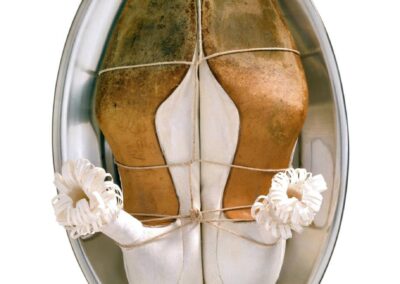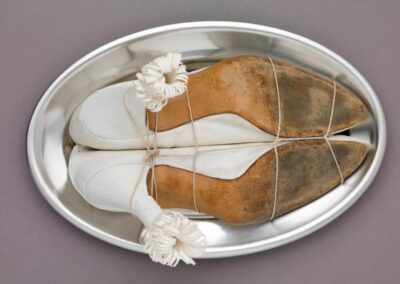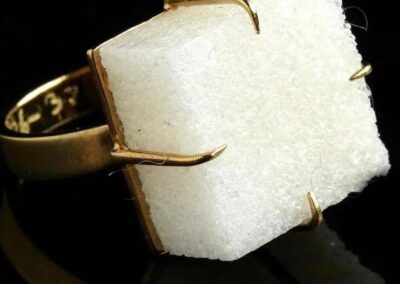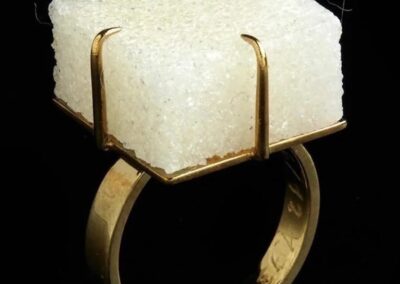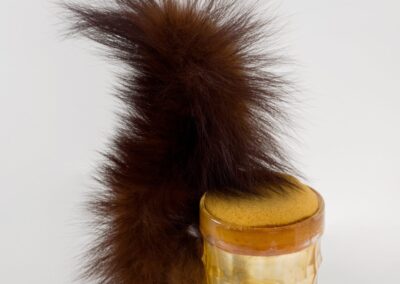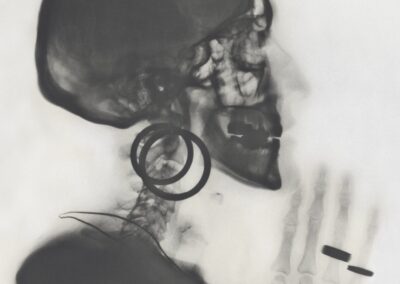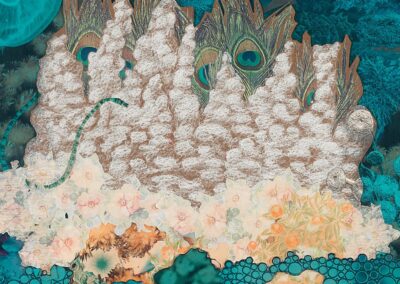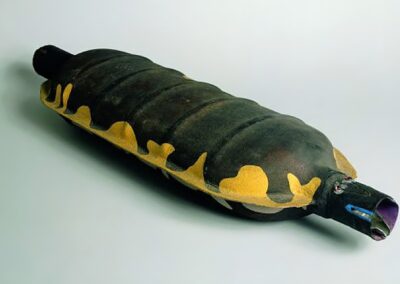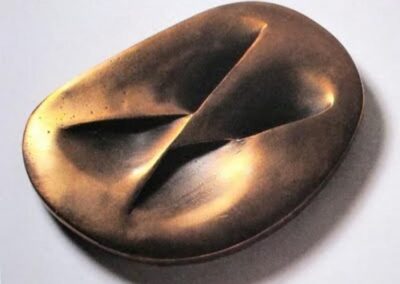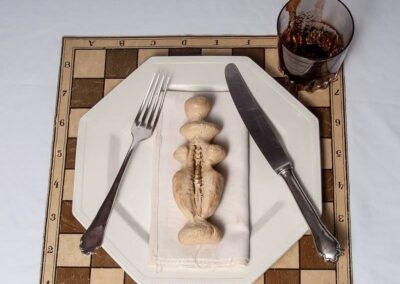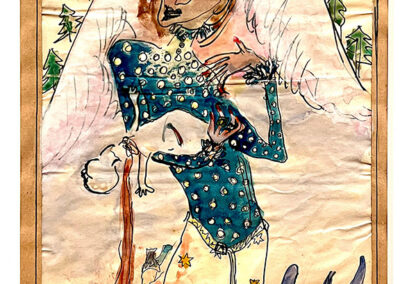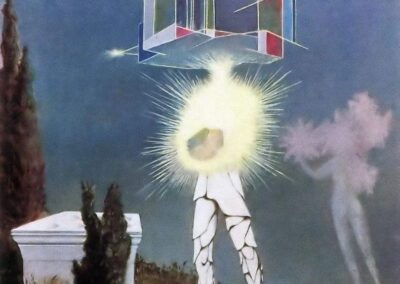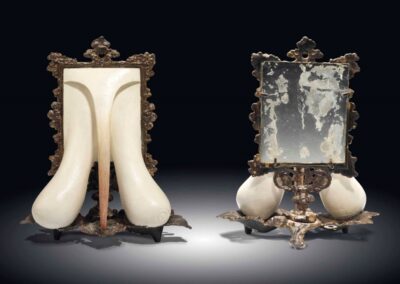Our next Artist You Need To Know is Méret Oppenheim (1913 – 1985).
Oppenheim was a German-born Swiss Surrealist artist who worked in painting, photography and sculpture. She is best known for several sculptural works that entice and unsettle the viewer and that are – even nearly a century after their creation – still significant in their encapsulation of the Surrealist aesthetic and ability to enthrall those who see them. Considering Oppenheim’s art in 2022, Emily Wallington in Art in America has stated appropriately that “Meret Oppenheim’s furred sculpture Object is widely considered the Surrealist object par excellence.”
“Every idea is born with its form. I make reality of ideas as they come into my head.”
Oppenheim was born in Berlin, but when her father was conscripted into the German army for WW I her mother took her and her siblings to live with her maternal grandparents in Delémont, Switzerland. She was raised in a sphere that appreciated culture and exposed her to a variety of artistic and political ideas (her mother encouraged her to collect prints of the work of Paul Klee, she was familiar with the work of Alfred Kubin and movements like German Expressionists, French Impressionists and poems of the Romantics. Later, in the 1920s, Oppenheim experienced artworks that were part of the movements influenced by Modernism, Expressionism, Fauvism, and Cubism.
Her father was a psychologist and his interest in Carl Jung (and encouragement to his daughter to record her dreams) was as important as the role her aunt, Ruth Wenger as a modern, independent woman, had in shaping Oppenheim. Dreams would exert a major defining aspect of Oppenheim’s work for the length of her career : “Throughout her life, Oppenheim carefully analyzed her own dreams and transcribed them in detail in her writings. She attempted to use them when addressing “fundamental life questions.”” (from here)
Oppenheim, at the age of 18 in 1932, moved to Paris from Basel. Her first studio space was in her hotel room at Montparnasse Hotel in Paris. She also attended the Académie de la Grande Chaumière where Oppenheim studied painting : her attendance was somewhat sporadic but she found a larger community outside the academic space through encounters with Hans Arp, Alberto Giacometti (which led to her inclusion in the Surrealist exhibition in the Salon des Surindépendants in Paris in 1933). Later she would meet another major influence – André Breton – and Oppenheim became an important artist within the Parisian circle of Surrealists.
From here : “With the looks of a Hollywood film star, and the brain of a mad scientist, Oppenheim managed to persuade the Surrealists to allow her to join their circle (which until then was strictly no-girls-allowed). Her fetishistic sculptures, fashioned from teacups, fur, high heels and other feminine domestic objects, address the themes of food, sex, death, cannibalism and bondage, always with a mischievous twist. Her famous fur-lined teacup was instantly embraced by the Surrealists as the quintessential expression of their movement.”
She often modelled for Man Ray during this period, as well, collaborating on some of his more engaging – and controversial – photographs.
Oppenheim had her first solo exhibition in Basel, Switzerland, at the Galerie Schulthess in 1936 : that same year, she was also in two important Surrealist exhibitions outside of Paris. These were The International Surrealist Exhibition (New Burlington Galleries, London) and Fantastic Art Dada Surrealism (The Museum of Modern Art, New York). A half dozen years later, Oppenheim was featured in Peggy Guggenheim‘s large exhibition showcasing a thirty one female artists at the Art of This Century gallery in New York City. She would show her work in a number of Surrealist exhibitions until 1960, being a seminal part of that movement.
Major retrospectives of her work have been mounted at the Moderna Museet Stockholm (1967) and Museum der Stadt, Solothurn (Switzerland, 1974), which travelled to Kunstmuseum Winterthur and Wilhelm-Lehmbruck Museum (Duisburg, Germany, 1975). Later important exhibitions include a massive show at the Solomon R. Guggenheim Museum in 1996, a very in depth and wide ranging retrospective at the Martin-Gropius-Bau in Berlin in 2013, and another career spanning show at MOMA In 2022.
When she was recognized with the Art Award of the City of Basel in 1975, part of her acceptance speech was the assertion (for which she is well known) that “Freedom is not given to you — you have to take it.” Nearly a decade later, in 1982, Oppenheim was awarded the Berliner Kunstpreis.
Oppenheim is also a significant feminist icon in art history and beyond, both for her forthright attitude and also for the often explicit yet considered nature of her artworks. In 1975, as part of a speech accompanying an exhibition of her artworks, Oppenheim “directly asked women “to demonstrate to society by the invalidity of taboos by adopting unconventional ways of life” and utilize their intellect as a creative strength without fear.” (from here)
Méret Oppenheim died in 1985 at the age of 72 : she was active and protective regarding her writings and artworks, having a strong hand in how and where they were published and sold. Much of her ephemera and artwork can be found in various institutions in Bern, in her native Switzerland, but primarily they’re kept in the Museum of Fine Arts (Bern) and the National Library in the same city. A Swiss postage stamp was commissioned in 1993 inspired by her work, and in 2017, the 104th anniversary of her birth was marked with a Google Doodle.
Much more about Méret Oppenheim’s life and work can be enjoyed here.
“If you speak a new language of your own that others have yet to learn, you may have to wait a very long time for a positive echo.”




